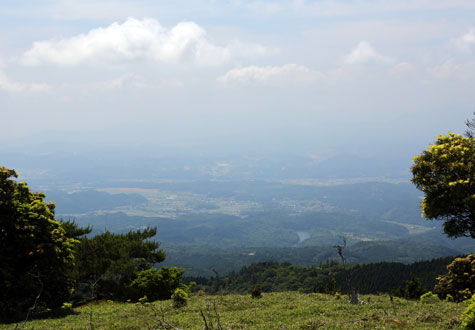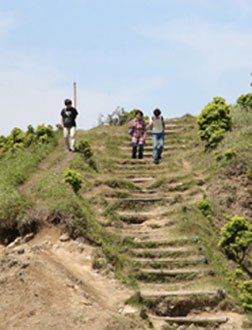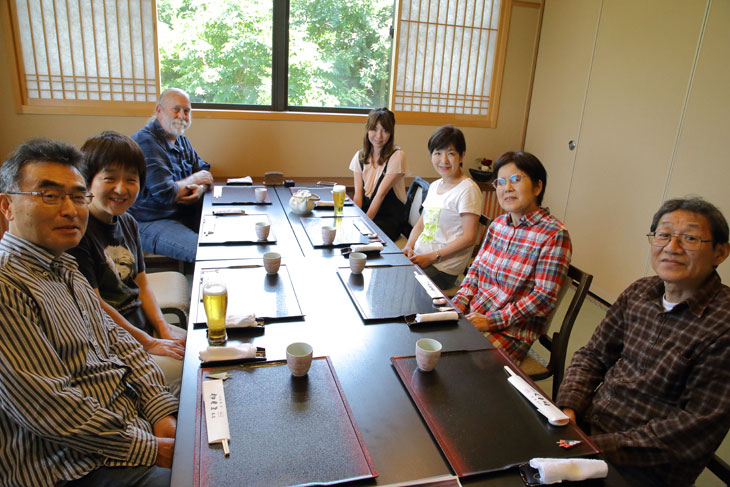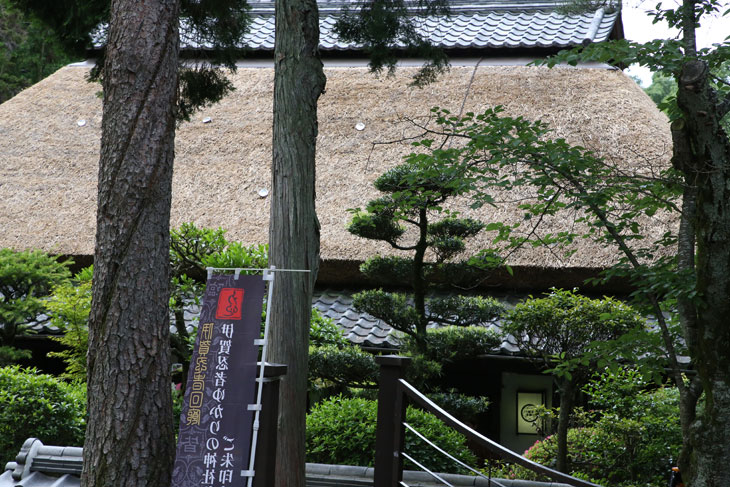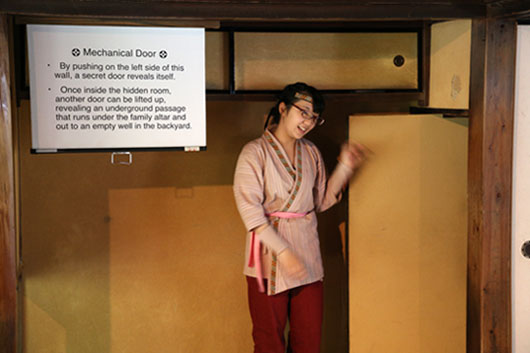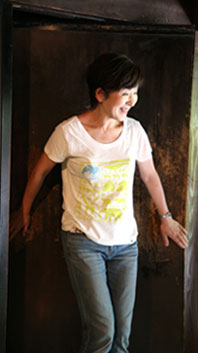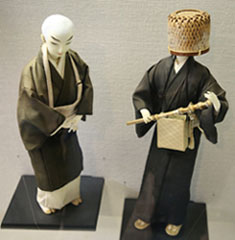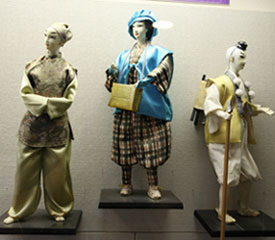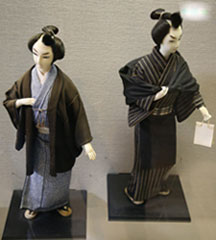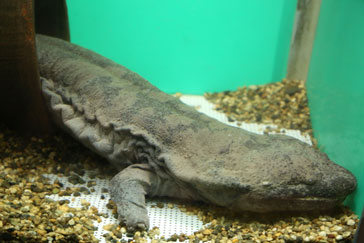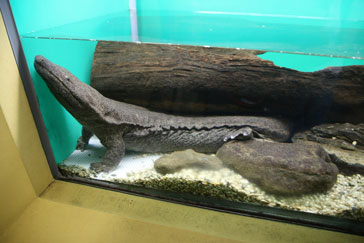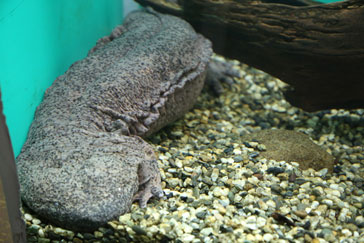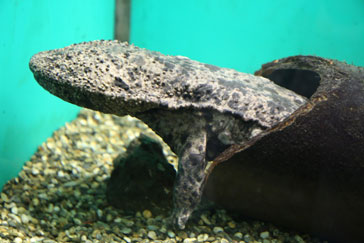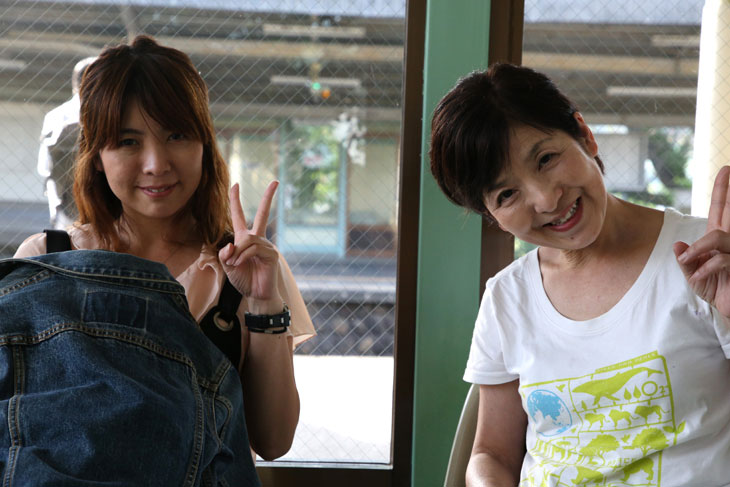Childhood Dreams
The Iga-ryu Ninja Museum and Giant Salamanders at Akame Shijuhaci Taki
The next morning, both Sumi's sisters and their husbands joined us for another day of adventuring.
We piled into 2 cars and set off. We stopped first to enjoy the view of the Aoyama Plateau but,
unfortunately, it was a bit hazy.
Next up was a tasty lunch.
Then it was off to the Iga-ryu Ninja Museum. In the 15th century, the area was home to one of the most
famous ninja schools in Japan. The museum is housed in an ordinary Japanese farm house that has been
modified to demonstrate the techniques used by ninja.
A guide presents a series of demonstrations in Japanese, but there are descriptive English signs so it
was not difficult to follow what she was saying. In the pictures below she is showing us a secret door
that is activated by pressing on the left side of the wall. Sumi volunteered to help with the demonstration.
After the demonstrations, we went downstairs to the museum where we learned many interesting facts about
ninjas. Fortunately, the signs were written in Japanese and English. These dolls illustrate 7 ways that a
ninja could disguise himself - as a traveling priest, a straw-hat-clad Buddhist priest, novice priest,
acrobat, merchant, street musician or in the everyday attire of a farmer or warrior.
Many castles at the time were surrounded by moats of mud because it was more difficult for enemies to cross
swampy ground than to swim across water. In this case, ninja used mizugumo (mud shoes) to distribute their
weight over a wider area and walk more easily on the mud. They also made a variety of wooden guns which shot
iron chips and gravel. Both items are pictured below along with an explanation of how ninja could tell time
by looking at a cat's eye.
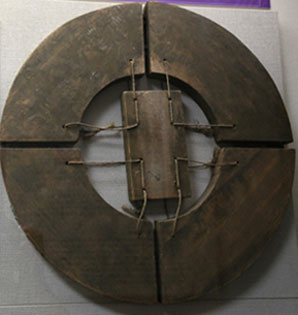
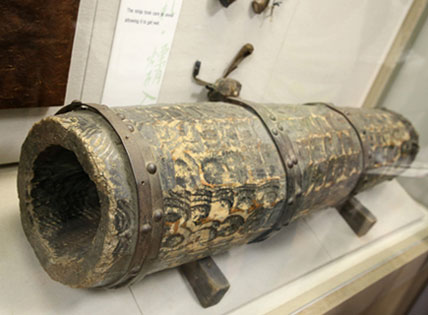

Our final stop of the day was Akame Shijuhaci Taki (Akame 48 Waterfalls). Sumi had told us about the giant
Japanese salamanders that live in the area, and she was determined that we would see them.
Between the 15th and the 18th centuries, the Akame Valley was a training ground for the Iga-ryu ninja. Today
the area is part of Muro Akame Aoyama National Park. It was late afternoon when we arrived, so we didn't have
time to explore the forested trails. There are actually more than 48 waterfalls, but, apparently 48 is used
by the Japanese to mean "many" much as the British use the word "pudding" to refer to almost any dessert.

The Japan Salamander Center is located at the entrance to the park. The size of the salamanders was quite
impressive. They can grow to be 5 feet long! The Japanese call these creatures Osanshouo which means
"giant pepper fish" because they excrete a mucus with an odor resembling sansyou pepper when they
are excited.
The salamanders have all been given names and someone with a vivid imagination has endowed them with
personality traits. Pictured below are Kusukusu, a Jaccuzzi fan; YouYou, reputed to be superwild; Kotetsu,
said to be rowdy; and Iduki, who is tough and patient.
The day was drawing to a close. We sadly bid Sumi's sisters and their husbands a fond farewell and returned
to Osaka with Miki and Sumi.
The next day we would journey back to Tokyo where we would spend one more day before returning to Hawaii.
Our trip had been a wonderful experience, and we were pleased that we had managed to spend time with almost
everyone we wanted to see.
